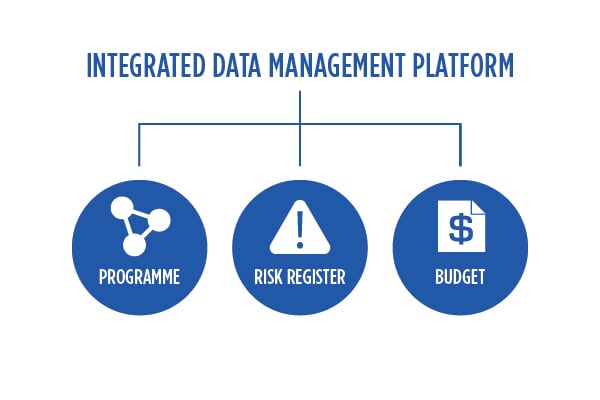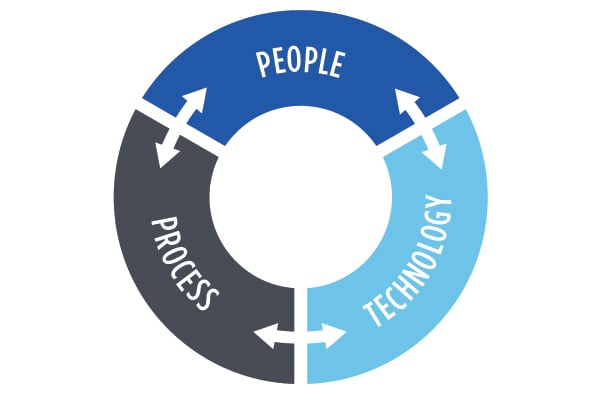Wasted time and needless expenditures have long been the bane of project managers. The root cause of these challenges often can be traced to data management processes. Manual data input on outdated systems often creates the issue of data residing in silos, resulting in needless errors.
Integrated management systems are making these perennial issues a relic of the past. Let’s look at a rather simplistic example.
An all-new digital substation has been designed to incorporate a range of advanced technologies, all of which will result in much-improved reliability for the local utility. The project proceeds with a schedule as well as a budget established for engineering, procurement, construction and then contingency costs. A risk register is also created containing all the known and unknown threats as well as opportunities.
Under traditional practice, all project documentation would be managed manually. Items ranging from budget, schedule and risk register all are required to be updated manually, creating many opportunities for human error as well as a cumbersome and tedious process to audit project documents in the event of design or construction errors.
However, by implementing a system of advanced, automated project controls, the update process no longer depends on manual data input. Project data is updated automatically with immediate adjustments to cost and schedule impacts based on project progress reports. Efficiencies can result in significant cost and schedule impacts, all thanks to the reduced time for data entry and lower risk of errors.
 How Does It Work?
How Does It Work?
An integrated data management system is built on a software platform integrating programme, risk register and budget control subsystems. This interconnection enables proactive, two-way communication between the user and all the underlying systems.
 The integrated data management platform allows for easy, efficient user interaction with all the systems. An update to the programme subsystem, for example, triggers updates to both the risk register and budget subsystems with no manual input required.
The integrated data management platform allows for easy, efficient user interaction with all the systems. An update to the programme subsystem, for example, triggers updates to both the risk register and budget subsystems with no manual input required.
Conventional Systems Create Numerous Issues
Current procedures in managing project controls have worked for decades. So why change now? Here are the primary reasons:
- Reduce or even eliminate time in managing data. Entering and re-entering values in different forms into various systems is time-consuming. It is a requirement that eats into time available for more productive pursuits such as analysing the actual data to gain valuable insights. Referring back to digital substation example: When the equipment is paid for, the cost needs to be taken out of the budget, the schedule needs to be advanced and the risk associated with the purchase needs to be decreased. Doing this manually can cause bottlenecks.
- Reduce or eliminate human error. The repetitive nature of data management leads to administrators making mistakes and entering incorrect information. This lowers the accuracy of the whole system and leads to rework, which adds time and cost to a project. Referring to our plant example again: The price may be entered into the budget incorrectly, leading to issues in financing. This must be identified and corrected before it causes a major problem.
- Eliminate data silos. Information gets trapped in disparate systems, possibly across various departments. This leads to numerous problems, such as inconsistent results, time wasted searching for data, and conflicting views as to what the truth is. If the procurement department does not convey the correct information to the construction department, crews could arrive on-site on the wrong day to install the plant.
The Way Forward
An effective integrated data management system requires a new way of thinking about technology, the process to manage the technology and how people interact with the system. Here are some suggestions:
- Technology. For any project, selecting the right tools is essential to success. The same holds true for project controls. There is no shortage of available technology options. As an example, for our digital substation project, lidar (image collection technology) could be used to collect data about the progress of the installation of the plant. By leveraging building information modelling (BIM), the collected lidar images could be compared against planned progress to track how well the project is performing.
- Process. Effective processes start with clear sets of instructions. Even the most advanced technologies cannot work without processes that delineate that the right actions are taken in the right sequence. Continuing with our substation example: Our process would specify a progression — from obtaining the lidar data to storing it in a database, converting it to a BIM model, comparing it to the planned progress model, reporting results and, finally, taking appropriate action. Data validation and integrity checks should also be included throughout.
- People. Users also play an integral role in the success of any system. Without adoption by them, it won’t be effective. There are several factors that influence user buy-in and engagement. These include the culture of the organisation, the training provided and the assurance that the new solutions are required. Without the acceptance of workers to use the lidar and BIM, they may not adopt the new system, and miss out on the associated benefits.
 The three pillars of integrated data management.
The three pillars of integrated data management.
Three Pillars for Success
Just as it takes a seamless blend of engineering and construction to deliver a functioning digital substation, our ecosystem of technology, process and people must work holistically for integrated data management systems to work to their fullest potential. It is the way forward for effective project delivery in every sector of the engineering and construction industry.
EPC contracts deliver value, but owners need to be aware of the nuances in contractual frameworks as they evaluate and select their EPC partner.

